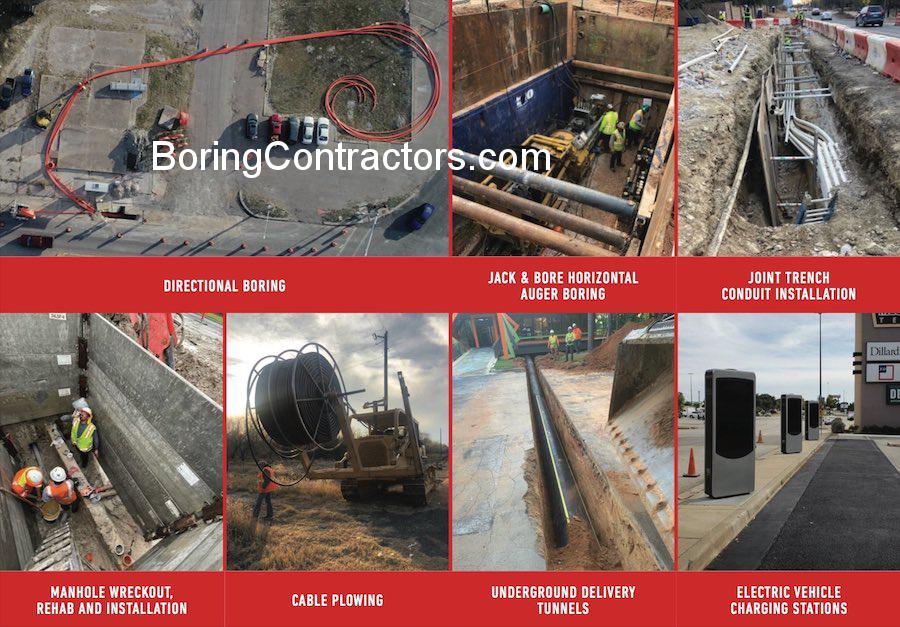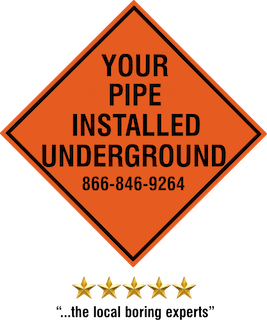Directional Boring
Boring Contractors, LLC | The Trenchless Underground Utility Horizontal Directional Drilling (HDD) Company - Directional Boring Contractors
Directional boring, also known as horizontal directional drilling (HDD), is a trenchless method of installing underground infrastructure, including pipes, conduits, and cables, in a minimally invasive way. This method is widely used across various industries to minimize surface disruption and is preferred for its efficiency, precision, and reduced environmental impact. Here’s how it’s utilized in specific applications:
Boring Contractors, LLC | The Trenchless Underground Utility Horizontal Directional Drilling (HDD) Company - Directional Boring Companies
1. Electric Utilities
- Purpose: To install underground power lines and conduit for electrical cables.
- Benefits: Protects cables from weather-related disruptions (e.g., storms, floods), vandalism, and vehicle damage.
- Application: HDD is used to place conduits under streets, highways, and other obstructions to connect substations, buildings, and power grids.
2. Fiber Optics
- Purpose: To install high-speed internet and telecommunications lines.
- Benefits: Ensures minimal disruption to urban areas while delivering fiber-optic cables with high accuracy.
- Application: Fiber-optic networks are often installed in densely populated areas using HDD to avoid road closures and excavation near existing utilities.
3. Sewer Systems
- Purpose: To install gravity sewers, pressurized sewer pipes, or repair existing lines.
- Benefits: Prevents surface-level disturbances in urban and environmentally sensitive areas.
- Application: Sewer lines are often installed under rivers, wetlands, or urban infrastructure using HDD for precise grade control.
4. Water Systems
- Purpose: To install potable water pipelines and repair or replace aging infrastructure.
- Benefits: Reduces risks of contamination, maintains continuous service during installation, and preserves natural landscapes.
- Application: HDD allows water mains to be installed under roadways, rivers, and environmentally sensitive zones.
5. Oil & Gas
- Purpose: To install pipelines for crude oil, natural gas, and refined products.
- Benefits: Allows for the safe and efficient installation of pipelines across long distances and challenging terrains.
- Application: HDD is used to bore under rivers, highways, and urban areas, ensuring environmental protection and regulatory compliance.
6. Irrigation Systems
- Purpose: To install pipes for agricultural or recreational irrigation systems.
- Benefits: Limits the disruption to farming operations and recreational areas during installation.
- Application: HDD installs irrigation lines under roads, fields, and rivers, providing water efficiently without impacting existing landscapes.
Advantages of HDD in These Applications
- Minimal Disruption: HDD preserves surface structures like roads, buildings, and natural features.
- Cost Efficiency: Reduces labor, time, and restoration costs compared to open-trench methods.
- Environmental Protection: Lowers environmental impact by avoiding extensive excavation.
- Versatility: Can be used in diverse terrains, including urban, rural, and environmentally sensitive areas.
- Precision: Ensures accurate placement of pipelines and conduits, even in complex conditions.
Boring Contractors, LLC | The Trenchless Underground Utility Horizontal Directional Drilling (HDD) Company - Directional Boring Companies Near Me
Directional boring has become a cornerstone of modern infrastructure development, enabling industries to meet growing demands while maintaining sustainability and efficiency.


